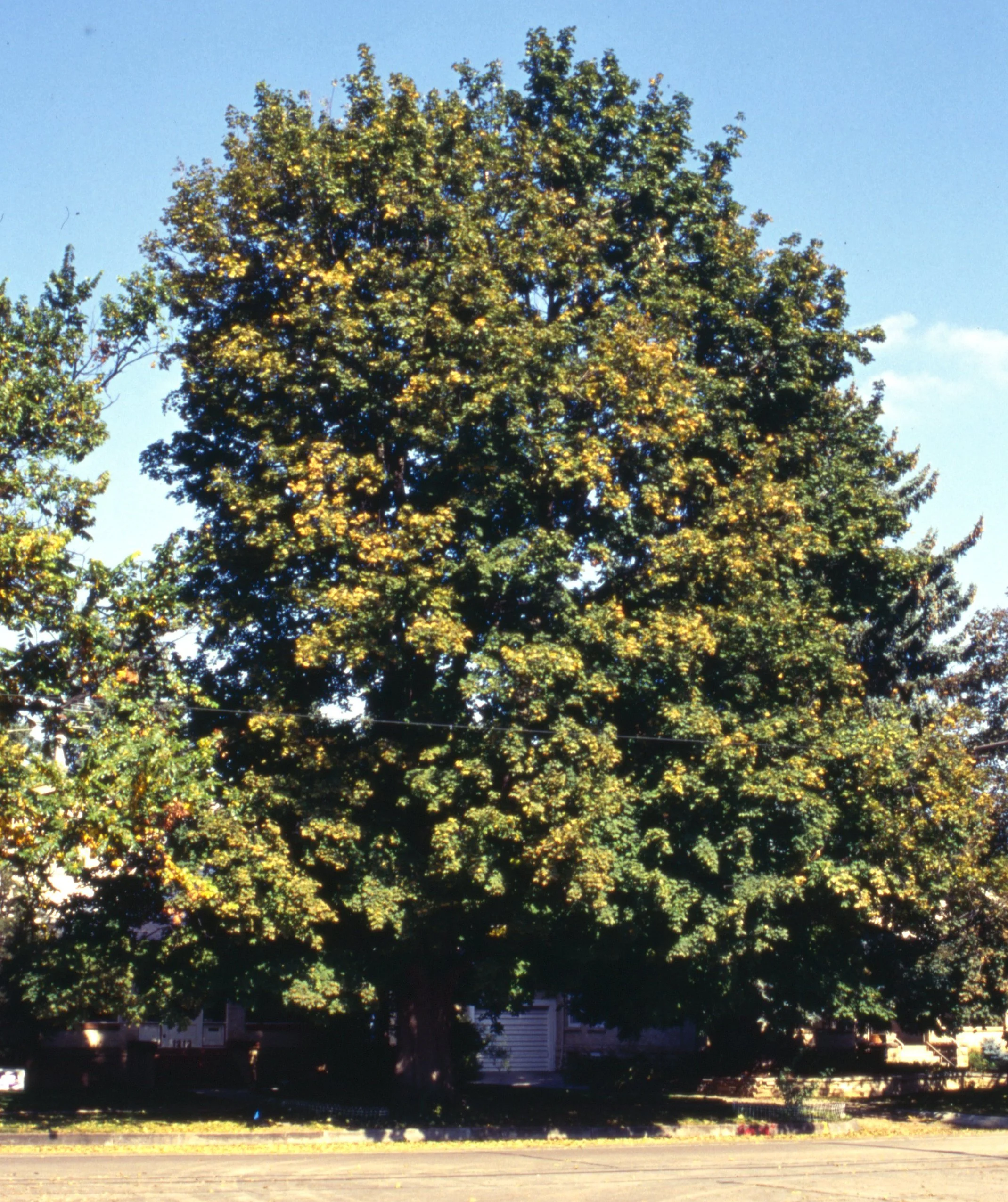Norway maple (Acer platanoides)
Third place champion Norway maple in Fort Collins
Species info:
Leaves: Opposite, simple, 5-lobed, 3–6 inches across with long 3–4 inch petioles. Color varies by cultivar — new growth may be rust to red-purple fading to green, or remain red-purple all season.
Leaflets: N/A (simple leaves)
Leaf Surface: Smooth, glossy upper surface; lighter underside.
Bark: Distinctive gray-black bark with pronounced root flare; becomes furrowed with age.
Flowers: Small, greenish-yellow, attractive clusters appearing in April before leaf-out.
Fruit: Twin samaras forming a straight line (unlike most maples, whose samaras angle at 30–90°).
Botanical: Acer platanoides
Family: Sapindaceae
Mature Height: 40 to 50 feet
Canopy Spread: 40 to 50 feet
Foliage Type: Deciduous
Tree Shape: Rounded to oval; some cultivars columnar
Growth Rate: Slow to medium, depending on cultivar
Fall Color: Usually yellow; some cultivars show orange or red tones
Water Use: Moderate; tolerates heat and drought better than most maples
Hardiness: Zones 3–7 (depending on cultivar); best below 6,500 ft
Soil Preference: Tolerates a range of soils, including heavy alkaline clay; prefers well-drained sites
Wildlife Value: Provides light shade and habitat; samaras eaten by small mammals and birds
Pests/Pathogens: Aphids common; their honeydew can promote sooty mold. Susceptible to frost cracks, root girdling, and shallow rooting that may lift sidewalks or restrict lawn growth.
Planting Recommendations: Performs well below 6,500 ft in sunny, open sites. Avoid planting near sidewalks or compacted areas; prune in late fall to minimize sap bleeding.
Information Sources:
Michael A. Dirr. Dirr’s Encyclopedia of Trees and Shrubs. Timber Press. 2011


